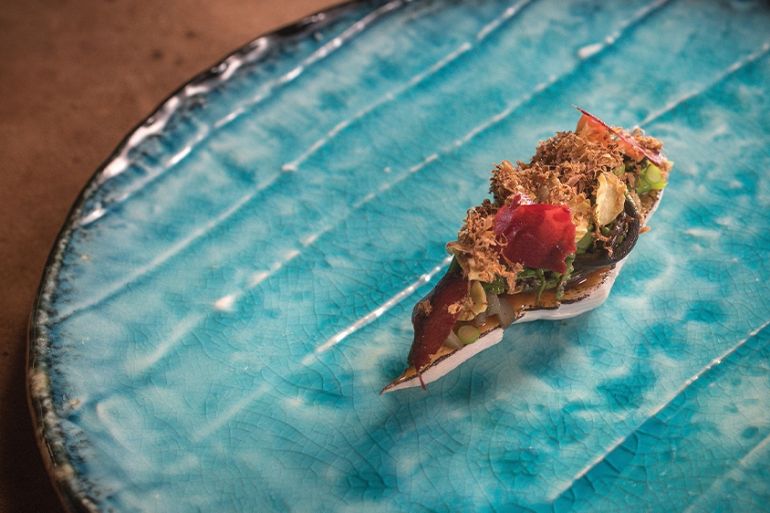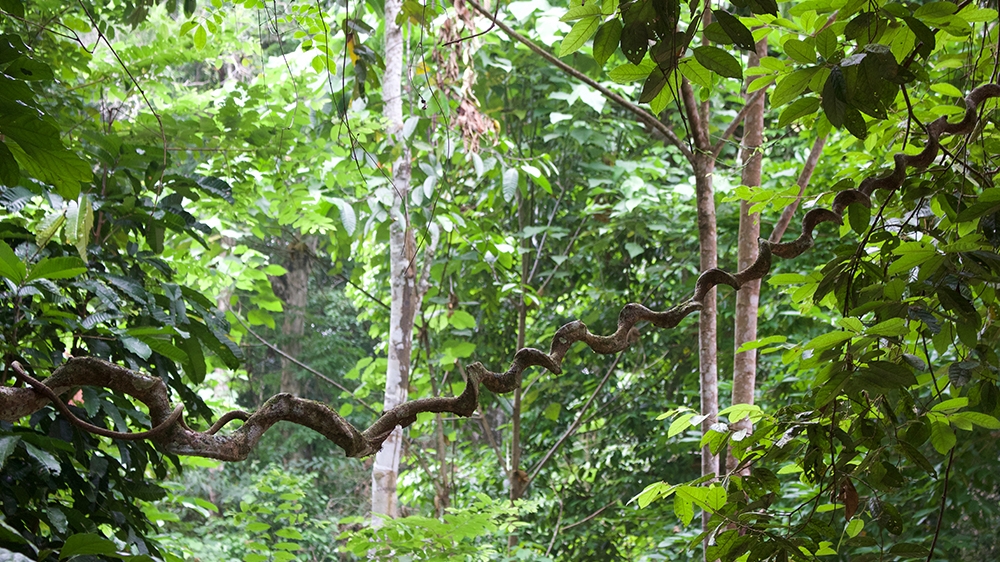Wild eats: Malaysia’s top chefs find jungle inspiration
Contemporary chefs are learning from indigenous people to incorporate wild, domestic produce into their dishes.

Kuala Lumpur, Malaysia – In the dense jungles of the Cameron Highlands, high in the mountains that run down the spine of mainland Malaysia, veteran chef Raymond Tham was swatting mosquitoes when he made a thrilling discovery.
“I was on a trail walk with a local ranger from my hotel, who was incredibly knowledgeable about the land,” Tham said. “He started picking at trees and plucked these tiny berries. To my surprise, they had a strong citrus oil that burst out when squeezed.”
Keep reading
list of 4 itemsThe surfer chef behind South Africa’s first fine dining halal restaurant
Why are Pakistan’s wheat farmers protesting against the government?
About 282 million people faced acute hunger last year: UN-led report
Known as litsea cubeba, the fruit is packed with essential oils and frequently used by Malaysia’s indigenous people to cook fish, the ranger told an excited Tham.
The 38-year-old chef now plans to extract the oil from the berries to make a concentrated citrusy essence for seafood dishes at Beta KL, his restaurant in the Malaysian capital of Kuala Lumpur.
Tham is one of a growing number of Malaysian chefs finding inspiration in the country’s luxuriant landscapes – from the rainforest to the mangrove swamp.
Over at Dewakan, another Kuala Lumpur restaurant, creativity with the country’s indigenous ingredients was one of the reasons it was named one of Asia’s 50 Best Restaurants earlier this year.

Malaysia’s unique environments are home to numerous plant species traditionally used for food and medicine by the Orang Asli – the country’s original inhabitants who currently make up less than one percent of the population.
Wild produce has long been a staple of indigenous cooking, both on the peninsula and in Borneo, but it is only now being integrated into modern Malaysian fare as eateries turn their attention to local, rather than imported, ingredients.
A new approach
Like the Orang Asli who cook according to the availability of flora and fauna, Beta KL and Dewakan work with what is around them.
Both boast menus that are 80 percent domestically sourced and centred around seasonal produce.
They collaborate with small-scale suppliers and Orang Asli communities to obtain rare jungle fare such as kulim, a fruit that looks like a coconut, smells like truffles and tastes like garlic.
Neither restaurant is the first to focus on wild ingredients but they have become pioneers in presenting them in a way that appeals to Kuala Lumpur’s foodies.
A lot of Malaysians aren't food people, they are eating people
Take kulim. The Semai, an Orang Asli tribe in the states of Pahang and Perak, cook it in bamboo over a fire but chef Darren Teoh of Dewakan dries the fruit and transforms it into a powder to use as seasoning.
The restaurant is all about creating “a different Malaysian food experience”, Teoh said.
“We basically look at an ingredient and figure out the most interesting way to use it. We don’t experiment, we just cook; it’s a trial and error process.”
“Right now, we’re trying now to get tarap and bambagan [jungle mangoes] from Sarawak,” the 38-year-old continued. “The fibre closest to the skin tastes like pickled nutmeg and the inside of the fruit has the consistency of a squash, so we might use it in a miso or make a vinegar.”
It was during Teoh’s stint at Au Jardin Les Amis, a renowned French restaurant in Singapore, that his fixation with local ingredients began.
“The chef at that time was very disappointed with the quality of fish coming from overseas so he decided to use local fish. That was my first time filleting a live fish, also my first time eating a raw fish that had just died. The taste was amazing and from then on, my interest in domestic fare grew.”

Regional variations
At Beta KL, Tham is focused on presenting flavours from various Malaysian regions.
“People from separate states have varying taste buds because each area is home to specific flavours,” he explained.
“Each of my business partners is from a different region so we thought, why not showcase the range of the country’s offerings?”
While inspired by regional favourites Tham – like Teoh – plays around with texture and shape, making the end result look nothing like the original version.
In one dish inspired by Minangkabau cuisine from the central state of Negri Sembilan, Tham pairs a wild starfruit known as belimbing buluh – used by the Orang Asli to treat diabetes – with ox tongue and a gulai lemak [a kind of coconut curry] purée of turmeric leaves.
Despite their current popularity, Beta KL and Dewakan faced some initial resistance from diners who were sceptical about eating wild plants in a fancy setting. For Beta KL, it took at least a year for customers to move from doubt to acceptance.
That speaks to entrenched perceptions of fine dining, explained Gaik Kheng Khoo, an associate professor at the University of Nottingham Malaysia who specialises in identity and food.
“Malaysians simply aren’t that adventurous when it comes to exploring our own ingredients,” she said, noting how fine dining is usually associated with European or Japanese cuisine.

Before rapid urbanisation, many Malaysians were eating vegetables from their gardens but as the economy strengthened, people’s eating habits became more tied to their aspirations, Teoh said.
“From kailan (a leafy green vegetable), they went to chicken and imported vegetables like broccoli. Restaurants noticed and changed their menus accordingly.”
Experts say the solution lies in creating a food culture that isn’t just based on taste.
“A lot of Malaysians aren’t food people, they are eating people,” Teoh smiled. “Food culture isn’t restricted to what you stuff in your mouth, it’s about where things are grown, how we eat them and where we sit in a wheel of interconnected systems.”
Foraging tradition
Foraging has become a global food trend in recent years amid growing concerns about diet and climate change, but for the Orang Asli, foraging has always been a way of life.
‘”When the Orang Asli forage, they only take what they need,” said Khoo, who conducts foraging tours for her students in Orang Asli areas.
“They don’t pluck everything, they always leave a bit of the root to grow because they are essentially caretakers of the land.”
When buying from Orang Asli communities, Teoh and Tham say they agree to whatever price and quantities are offered without bargaining.
And while varying quantities prices usually restrict restaurants, who require a constant supply of ingredients, for Teoh and Tham, the scarcity is part of what makes their menus special.
“Because the Orang Asli forage in a sustainable way, I take whatever I can get,” explained Tham. “My menu becomes seasonal so if we get new items, I simply just add a new dish.”